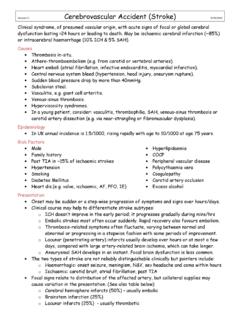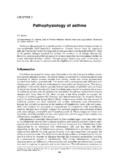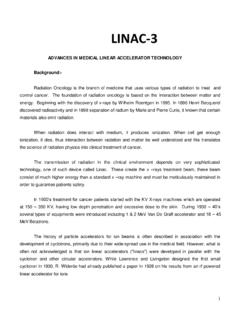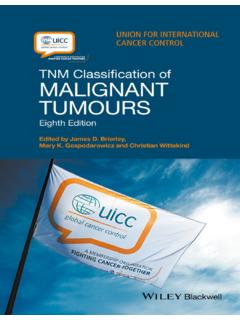Transcription of The four quadrants approach to clinical ethics case ...
1 2008;34;513-516 J. Med. ethics D K Sokol case analysis; an application and reviewThe "four quadrants " approach to clinical ethics information and services can be found at: These include: References #BIBLThis article cites 2 articles, 1 of which can be accessed free at: Rapid responses can respond to this article at: serviceEmail alertingthe top right corner of the article Receive free email alerts when new articles cite this article - sign up in the box at Notes order reprints of this article go to: go to: Journal of Medical EthicsTo subscribe to on 1 July 2008 from The four quadrants approach to clinical ethics caseanalysis; an application and reviewD K SokolCorrespondence to:Dr D K Sokol, Centre for Medicaland Healthcare Education, StGeorge s, University of London,Cranmer Terrace, London SW170RE, UK; 29 March 2007 Revised 25 May 2007 Accepted 18 June 2007 ABSTRACTIn 1982, Jonsen, Siegler and Winslade publishedClinicalEthics, in which they described the four quadrants approach , a new method of analysing clinical ethicscases.
2 Although the book is now in its 6th edition, aliterature search has revealed only one academic paperdemonstrating the method at work. This paper is anattempt to start filling this gap. As a way of describingand testing the approach , I apply the four quadrantsmethod to a detailed clinical ethics case. The analysis isinterspersed with reflections on the method itself. It ishoped that this experiment will encourage ethicists andclinicians to devote more attention to this the clinical ethicist who is regularly confrontedwith cases, one methodological question standsout above the rest: how best to perform an ethicscase analysis?InClinical ethics , Jonsenet alpresent the fourquadrants approach to ethics case analysis aim is to provide clinicians andethicists with a structured framework to guidethem towards an informed, morally justifieddecision.
3 Intrigued by their framework, I searchedfor articles in the medical and medical ethicsliteraturewhichdemonstratethemetho datwork. To my surprise, I found only one paper ina mental health nursing , nearly 25yearsafteritsfirstappearance,istheappr oachvirtually absent in the literature?This articleattempts to fill part of this gap by introducingthe method, applying it to a realistic clinicalscenario, and examining some of its strengths four quadrants approachThe four quadrants approach consists of four broadtopics: medical indications, patient preferences,quality of life, and contextual features. Each topicrepresents one of the four quadrants , within whichlie more specific questions. Rather than provide anarid description of the framework, I have chosen toillustrate the method by conducting an analysis ofa case published in Ackerman and Strong sAcasebook of medical ethics , which caught my atten-tion due to its similarity to a case encountered afew days previously in a clinical ethics from its realistic dimension, thecase is rich in detail and plagued with theuncertainties that pervade much of clinical give a better idea of the content of thequadrants, I have included some of the questionsin brackets wherever study.
4 Previous refusal of treatment by apresently comatose patientA 59-year-old male is brought to Accident &Emergency by his wife. Five weeks earlier, , the patient was disorientated andhostile. He had bilateral papilloedema (swelling ofoptic disks often caused by raised intracranialpressure) and an emergency CT scan showed alarge mass near the right lateral ventricle of thebrain, with surrounding oedema (swelling). He wasdiagnosed with high-grade astrocytoma, a highlymalignant brain few days later, the neurosurgeon told thepatient that the tumour was probably also told him that, without surgery, he wasunlikely to live longer than 6 months. Withsurgery, radiation and chemotherapy, there was a10 60% chance of surviving five or more years,depending on the grade of the tumour.
5 The patientwas also told that the operation carried a 5 10%risk of death or serious disability. The neurosur-geon recommended further diagnostic tests andsurgery to remove the tumour. The patient the first two months of hospitalisation, thepatient s mental status was usually impaired. Hewas often restless, hostile and combative, andrefused to answer questions. He rambled andtalked incoherently about friends, family andreligion. Occasionally, he would discuss imaginarybusiness transactions with staff. He appearedemotionally unstable, with sudden mood swingsfrom sad and anxious to cheerful. He sometimesclaimed not to know why he was in periods were interspersed with briefepisodes of more appropriate behaviour.
6 Hisfamily said that his behavioural problems were outof conversations with the consultant, thepatient continued to refuse diagnostic tests andtreatment, although he eventually accepted symp-tomatic treatment for his cerebral oedema. A fewweeks later, the consultant asked a psychiatristand neuropsychologist to assess the patient assessments took place when the patient sbehaviour was relatively normal. The psychiatristfound his behaviour appropriate and noted that hetalked sadly about his sister-in-law s long terminalillness after brain surgery and about his desire toavoid the same fate. He also feared complicationsof the arteriogram and surgery, and hoped Godwould provide a miracle psychiatrist judged that the patient hadnot yet fully appreciated the seriousness of theClinical ethicsJ Med Ethics2008;34:513 516.
7 On 1 July 2008 from situation but that he was competent to decide on treatment. Aneuropsychologist also judged the patient competent to make adecision regarding treatment, despite some socially inappropri-ate consultant appealed to the patient s wife and son tochange the patient s mind. After these family discussions, heconsented to an arteriogram and agreed to participate in aresearch study involving radiation and chemotherapy followedby neurosurgery. During the first radiation treatment, however,the patient told the radiotherapist that he signed the consentform only to obtain the chemotherapy and radiation. He had nointention to allow the 4 weeks, the radiation had to be stopped due to thepatient becoming nearly comatose.
8 Within a week, hisneurological symptoms worsened and he lapsed into a repeat CT scan was performed to determine the status ofthe tumour. Although the scan showed a low-density tumoursimilar to astrocytoma (the initial diagnosis), the homogenousappearance of the tumour led the radiologist to suspectmeningioma, a usually benign tumour with a 60% chance ofliving at least 10 neurosurgeon felt in the midst of a dilemma. Thepatient s neurological status would probably not improvewithout surgical intervention and delaying surgery wouldexacerbate the damage from intracranial pressure. Also, surgerywas the patient s only hope for long-term survival. His wife andson, now deeply upset by the patient s deterioration, were keenfor further treatment.
9 The neurosurgeon was confident thatthey would accept a strong recommendation for surgery. On theother hand, the patient had consistently refused surgery, despiteknowing the grave risks of his refusal. The 5 10% risk of deathor severe disability from surgery quadrants analysisThe order of analysis is as follows: medical indications, patientpreferences, quality of life, and contextual indicationsThis quadrant is the starting point of any case analysis. Itrequires the clinician/ethicist to review the medical situation,identify the treatment options, and determine how the patientcan be benefited, if at all, by now appears that the most probable diagnosis is a benignmeningioma with a 60% chance of 10-year survival after surgery( What is the patient s medical problem?)
10 History?Diagnosis?Prognosis? ). The risk of mortality or serious complicationsfrom surgery is decision to forego surgery would result in an exacerbationof symptoms from the raised intracranial pressure followed bydeath in the short to medium term. The goals of treatment arethus threefold: confirmation of diagnosis, alleviation of symp-toms and prolongation of life by excision of the tumour ( Whatare the goals of treatment?How can the patient be benefited bymedical and nursing care, and how can harm be avoided? )From a medical point of view, a strong case can be made forsurgery. The treatment has a good chance of achieving its goalsand is not so burdensome, especially given the patient scomatose state, that non-treatment is preferable ( What arethe probabilities of success?







